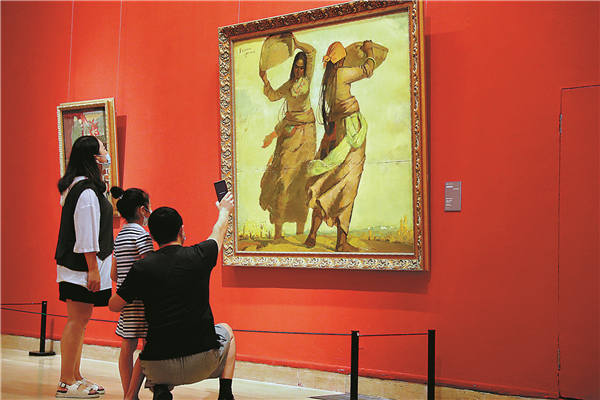

Wu says the same change also took place in the portrait genre of classical Chinese paintings, whereby the recurring subjects of scholars, court ladies and promising young men were gradually replaced by people from different walks of life, ethnic groups and people at the grassroots of society.
Examples on show include paintings by Huang Zhou, who is renowned for creating vivid depictions of people in the Xinjiang Uygur autonomous region.
Wu says the exhibition also shows two major themes of 20th century Chinese art, "one is how the Chinese united to regain national independence and liberation, and the other is how homegrown artists breathed new life into Chinese aesthetic traditions by introducing techniques of Western art".
The exhibition features noted artists, trained both at home and abroad, who were pioneers in combining the styles of the East and the West. One of them is Xu Beihong whose Galloping Horse has been one of the most exhibited and popular works at the NAMOC.
Xu, who once studied and lived in Europe, presented his attainment of traditional realism in Western art styles through his well-known horse paintings. Meanwhile, he sought to express a spirit of heroism and persistence as an encouragement to his people during difficult times.
Wu says some of the works created in recent years were conceived during trips organized by the Painting and Calligraphy Studio of the CPPCC National Committee to remote and underprivileged regions of the country. He says these works accentuate people's efforts to eliminate poverty and lead a better life under the leadership of the CPC.